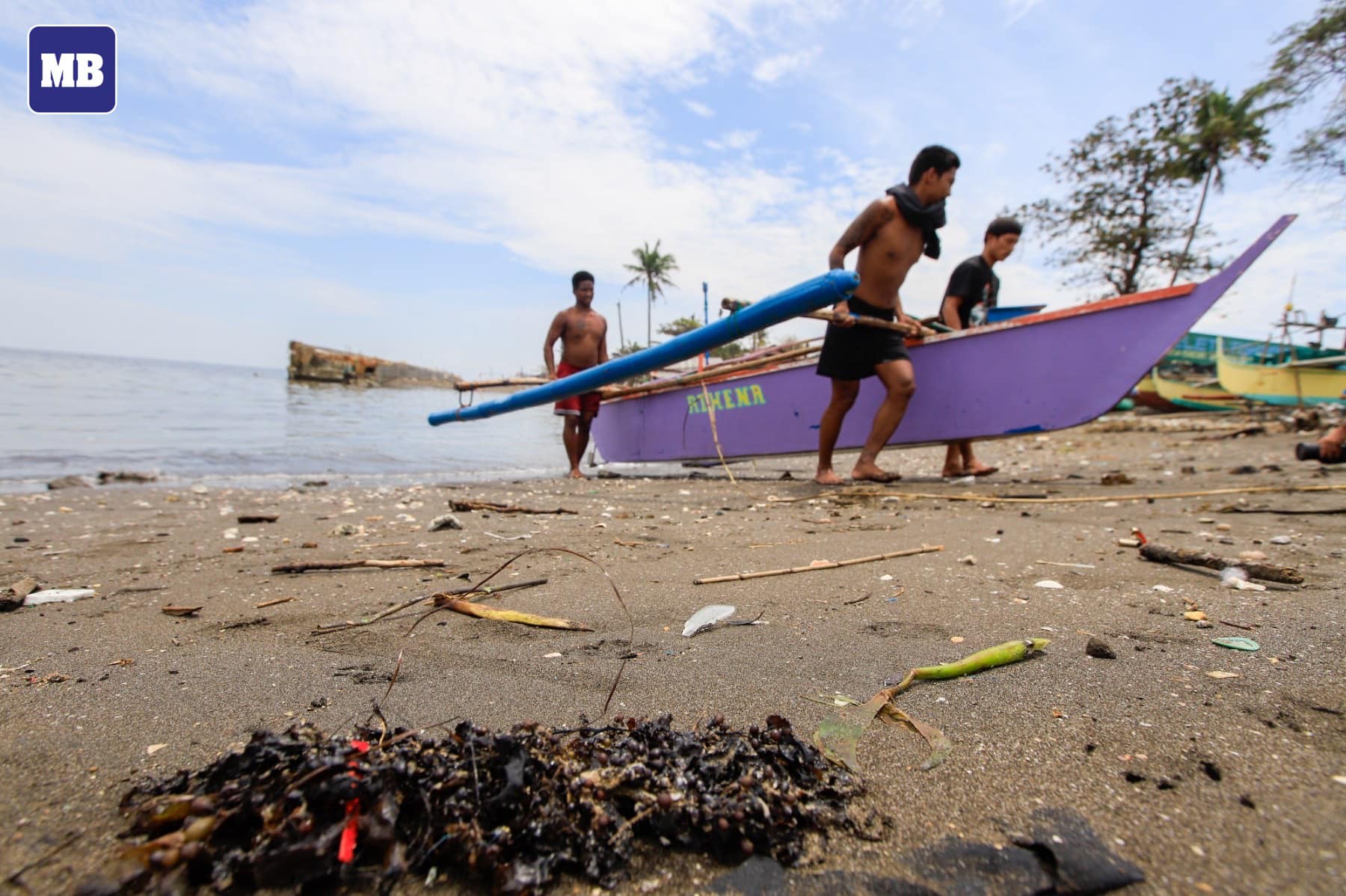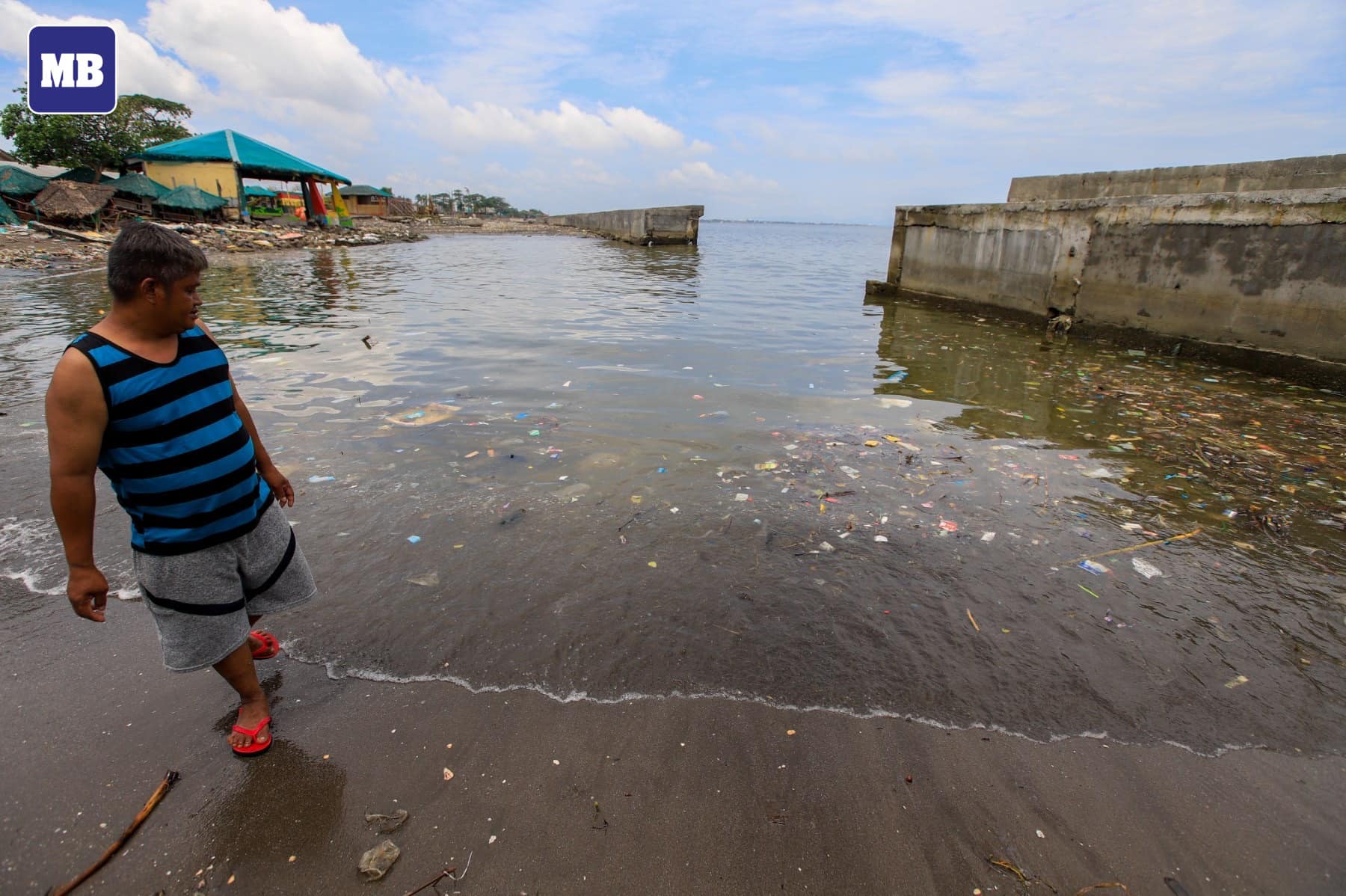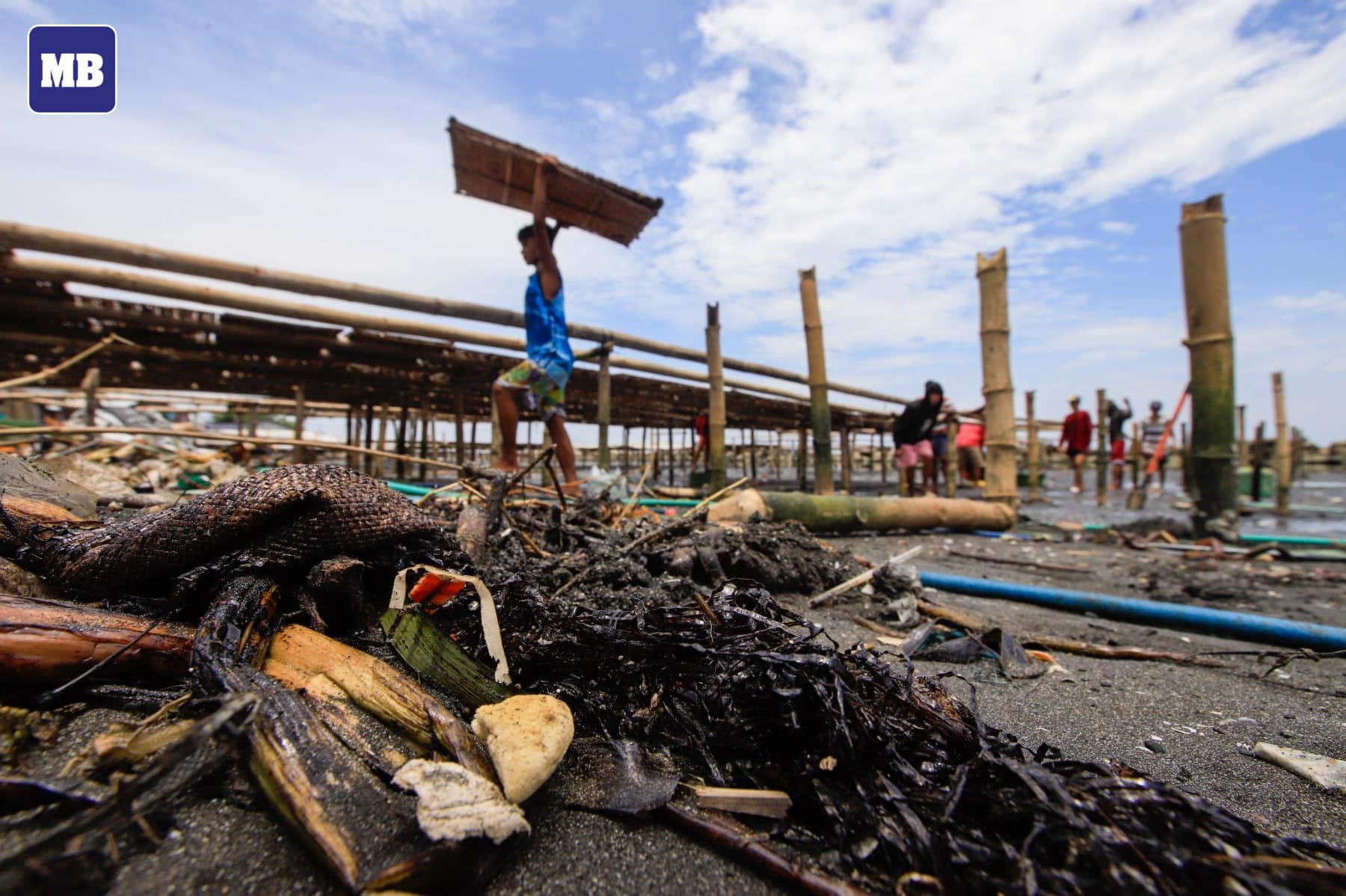State of calamity, no-catch zone declared in Cavite coast due to oil spill

Traces of oil spill are seen on the coast of Long Beach in Noveleta, Cavite on July 30 (Noel B. Pabalate/MANILA BULLETIN)
CAVITE – The provincial government is declaring a state of calamity and establishing a no-catch zone in coastal areas affected by the oil spill from the sunken tanker MT Terra Nova off Limay, Bataan.
In a social media post on Wednesday, July 31, Gov. Jonvic Remulla said the affected local government units (LGUs) include:
- Bacoor
- Kawit
- Maragondon
- Naic
- Noveleta
- Rosario
- Tanza
- Ternate
Remulla said the no-catch zone declaration applies to all shellfish in the vicinity, including mussels, blue crabs, mud crabs, and clams.
He also mentioned that the provincial government is coordinating the immediate distribution of relief goods for the 25,000 affected fisherfolk in Cavite.
The economic relief is a welcome development for Caviteño fishermen whose daily catch had been dwindling since the onset of the southwest monsoon.
In an interview with the Manila Bulletin on July 30, Fisherfolk group Pambansang Lakas ng Kilusang Mamamalakaya ng Pilipinas (PAMALAKAYA) in Cavite said many fishermen living along the coast of Cavite also suffered damages from the inclement weather during the onslaught of Typhoon Carina.

Traces of oil spill are seen on the coast of Long Beach in Noveleta, Cavite on July 30 (Noel B. Pabalate/MANILA BULLETIN)
“Lalong magiging delubyo ito dahil mismong yung huli mo, hindi makakain at may langis, at hindi mo maibebenta dahil sa mga tumapong kemikal sa dalampasigan (This will become an even greater disaster because the catch itself is contaminated with oil and cannot be eaten or sold due to the chemicals that have spilled onto the shore),” PAMALAKAYA-Cavite Secretary General Aries Soledad said.

Traces of oil spill are seen on the coast of Long Beach in Noveleta, Cavite on July 30 (Noel B. Pabalate/MANILA BULLETIN)
In a statement on July 30, the Bureau of Fisheries and Aquatic Resources (BFAR) said that sensory examinations revealed that fish from Noveleta and Rosario “showed signs of petrochemical tainting, even before visible oil slicks were detected.” On the other hand, fish from Cavite City, Naic, and Tanza were “deemed free of contamination at the time of sampling.”
Fish and shellfish samples are currently undergoing chemical analysis to detect Polycyclic Aromatic Hydrocarbons (PAHs).
The provincial government had earlier declared a state of calamity on July 24 due to the impact of the southwest monsoon enhanced by Typhoon Carina.